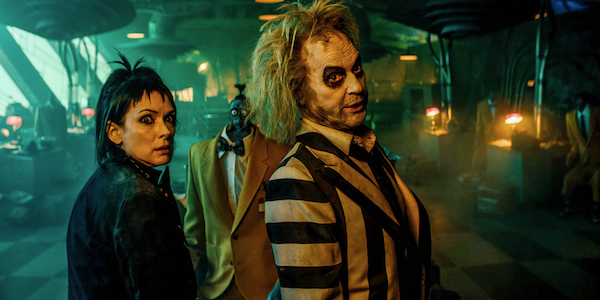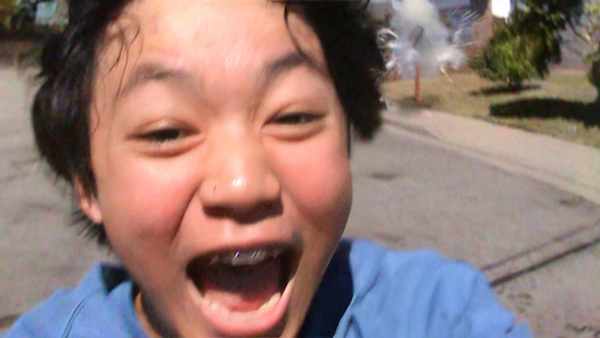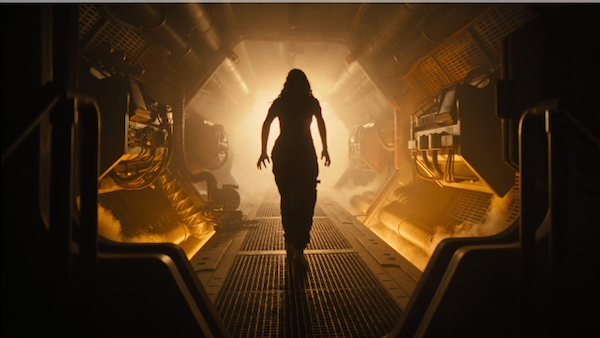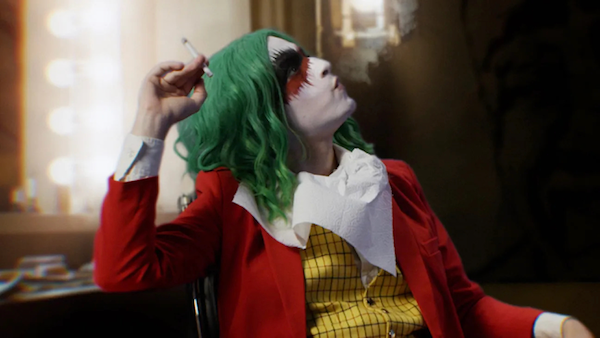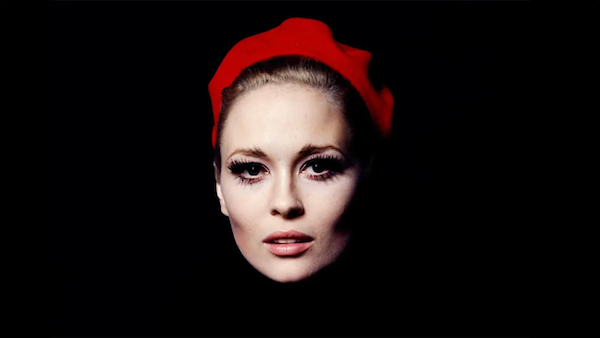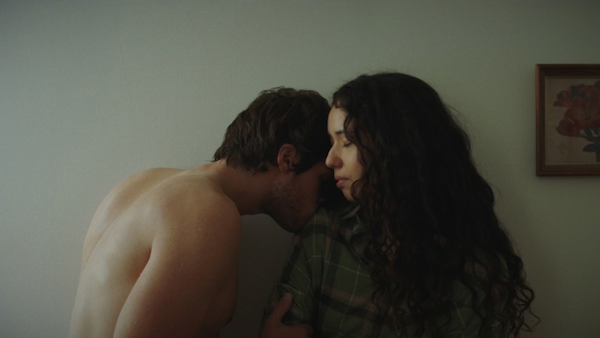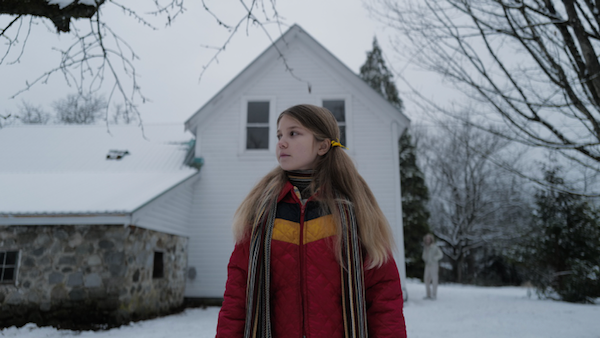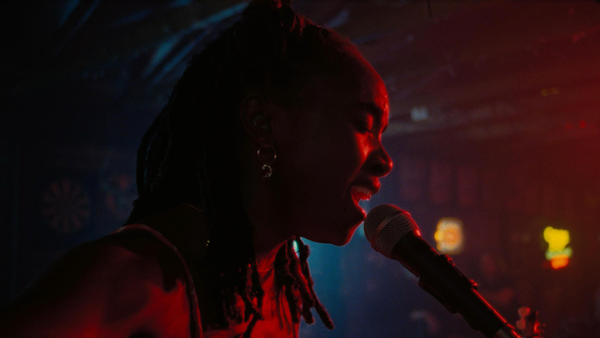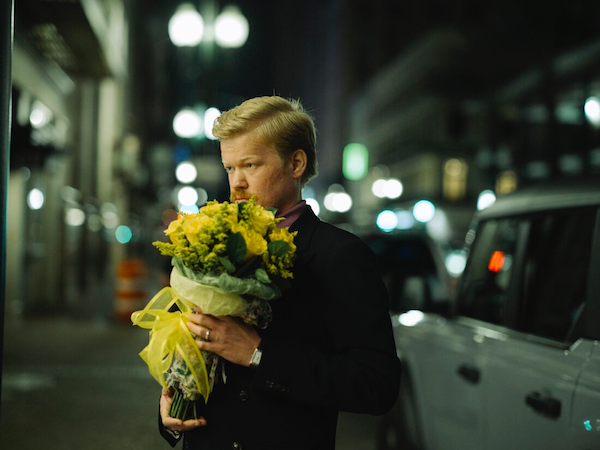Movie review by Greg Carlson
Thirty-six years is just a blink in eternity’s endless ocean of the afterlife, but as far as the Hollywood clock goes, it is a massive gulf. Lucky for us fans of Tim Burton’s original 1988 “Beetlejuice” that the key players from the classic horror-comedy decided to join the fun in what is certainly the filmmaker’s most enjoyable and satisfying movie in, well, a very long time. There is no shortage of chatter, both amateur and professional, expressing opinion on the sequel’s “necessity” – or lack thereof. But despite the character’s perennial popularity as an evergreen Halloween getup and the movie’s designation as the continuation of established intellectual property, the perfectly titled “Beetlejuice Beetlejuice” feels more fresh and dead-alive than the majority of its 2024 big studio peers.
Burton must share the credit with his game cast, anchored by returning MVPs Michael Keaton, Winona Ryder, and Catherine O’Hara. Newcomers Jenna Ortega (as Lydia’s daughter Astrid), Justin Theroux (as Lydia’s boyfriend Rory), Willem Dafoe (as detective/actor Wolf Jackson), Arthur Conti (as Astrid’s love interest Jeremy), and Monica Bellucci (as Betelgeuse’s ex-wife Delores LaVerge) top up the almost unwieldy ensemble. Despite the surplus of speaking parts, the screenplay by Alfred Gough and Miles Millar keeps most of the balls in the air. Much has already been said regarding the absence of Jeffrey Jones as Deetz patriarch Charles, whose storyline is handled with greater fidelity and dexterity than expected.
Along with Burton’s unique imagination and ghoulish vision, the careful metering of Betelgeuse was the first movie’s stealthy asset and shrewd gift. The obnoxious and unpredictable bio-exorcist left us wanting more by never monopolizing screen time. Had he populated every scene, one imagines the craven and horny trickster might be as taxing for the viewer as he is for the Deetz family. “Beetlejuice Beetlejuice” keeps the lesson, even if our “ghost with the most” once again looms large in final-act plot resolution. Burton and Keaton have emphasized the importance of Betelgeuse’s rather spectacular dearth of political correctness; I’ll take all the unwholesome bad behavior I can get.
With the exception of an exquisitely placed “Day-O (The Banana Boat Song)” callback, Harry Belafonte’s calypso candy gives way to some delightful needle-drops, including “MacArthur Park” in a showstopper of a sequence mirroring multiple moments from 1988. After several decades and projects great (“Ed Wood”) and not so great (“Alice in Wonderland”), it bears repeating that “Beetlejuice” was Burton’s sophomore feature, following what arguably remains his greatest movie: “Pee-wee’s Big Adventure.” There, at the beginning of a wildly successful career, Burton placed an emphasis on family and friendship that would fade from later work.
The most ardent admirers will be happy for the belated return of our horror host, given that we might never have seen the now 73-year-old Keaton return to his fright wig (especially when the likelihood of an immediate follow-up evaporated). The two unrealized sequel scripts commissioned in 1990 haunt fans with “what might have been.” The late Warren Skaaren’s “Beetlejuice in Love” proposed an unholy love triangle spanning the worlds of the living and the dead, and future “Mars Attacks!” collaborator Jonathan Gems described “Beetlejuice Goes Hawaiian” as a Burton-suggested mashup of surf flick and German Expressionism. Instead, “Beetlejuice Beetlejuice” lands with its own special blend of chaos and nostalgia. I will gladly take a number to wait for another installment. Even if 9,998,383,750,000 won’t be served for quite awhile.
